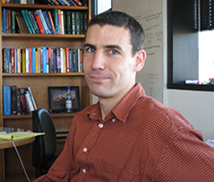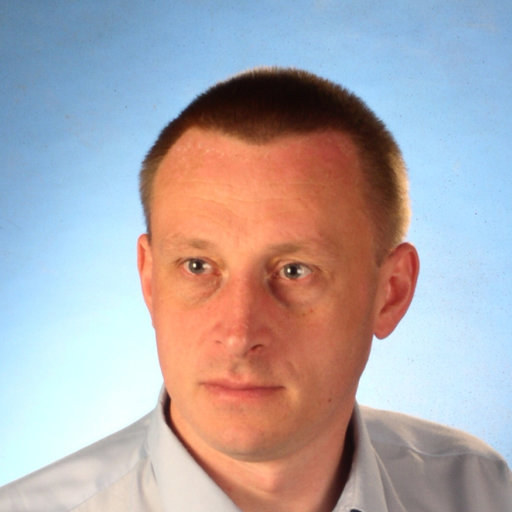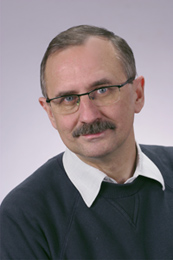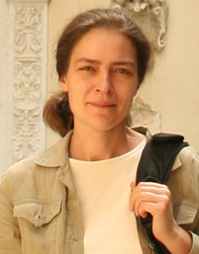Abstracts
Click the speaker's name to see the abstract.
Mini courses
Tetsuya J. Kobayashi >>
Christian Maes >>
Armita Nourmohammad >>
Olivier Rivoire >>
Gasper Tkacik >>
Lectures
Adam Bobrowski >>
Vincenzo Capasso >>
Tetsuhiro Hatakeyama >>
Michał Komorowski >>
Tomasz Lipniacki >>
Jacek Miękisz >>
Anna Ochab-Marcinek >>
Ryszard Rudnicki >>
Marta Tyran-Kamińska >>
Mini courses
 >> Tetsuya J. Kobayashi, University of Tokyo, Japan
>> Tetsuya J. Kobayashi, University of Tokyo, Japan
An integrative view of biological adaptation from single-cell to population
Adaptability to ever-changing environment is a fundamental property of living systems. One typical mechanism of such biological adaptations is Darwinian evolutionary adaptation via natural selection, in which adapted organisms are selected from an intrinsically heterogeneous population.The evolutionary adaptation is passive, non-anticipatory, and a posteriori in nature, because organisms are blind to whether they are doing better than others or not until they are selected by the environment eventually.
Also the evolutionary adaptation is inevitably collective, because a heterogeneous population is indispensable for the adaptation to function.
Another type of biological adaptations is predictive adaptation, in which organisms sense the environment, process the information obtained, and choose better behaviors or states for the future environmental state.
This adaptation is active, anticipatory, and a priori in nature, because organisms are aware of better behaviors and states for future before the future environmental state realizes.
In contrast to the evolutionary adaptation, the prediction adaptation can work at the single-cell-level. In real biological adaptations, however, both evolutionary and predictive adaptations are mixed up with different weights, which requires us to understand them integratively.
In this lecture, I would like to introduce a path-wise formulation of opulation dynamics with single-cell-level decision-making as a mathematical basis for integrative analysis of biological adaptations. As applications of this formulation, I am going to touch on the following topics in the lecture:
[a] Thermodynamic structure of population dynamics [1, 2]
[b] Fitness response relation to perturbations via large deviation theory [2]
[c] Natural selection as information processing [3]
[d] Fluctuation relations of fitness and information (an extension of evolutionary stable state) [3,4]
[e] Excess fitness and Clausius-like inequality under external control of fitness [5]
[f] Fitness values of information [4,6,7]
References
[1] Stanislas Leibler and Edo Kussell, “Individual histories and selection in heterogeneous populations”, PNAS, (2010), 107 (29) 13183-13188.
[2] Yuki Sughiyama, Tetsuya J. Kobayashi, Koji Tsumura, and Kazuyuki Aihara, “Pathwise thermodynamic structure in population dynamics”, Phys. Rev. E, (2015), 91, 32120.
[3] Tetsuya J. Kobayashi, and Yuki Sughiyama, “Fluctuation Relations of Fitness and Information in Population Dynamics”, Phys. Rev. Lett., (2015), 115(23), 238102.
[4] Tetsuya J. Kobayashi, and Yuki Sughiyama, “Information thermodynamic structure in population dynamics in fluctuating environment”, Phys. Rev. E, (2017), 96, 012402.
[5] Yuki Sughiyama, and Tetsuya J. Kobayashi, “Steady-state thermodynamics for population growth in fluctuating environments”, Phys. Rev. E, (2017), 95, 012131.
[6] O. Rivoire, and S. Leibler, “The value of information for populations in varying environments”, J. Stat. Phys., (2011), 142, 1124-66.
[7] Tetsuya J. Kobayashi, and Yuki Sughiyama, “Individual Sensing can Gain more Fitness than its Information”, arXiv:1712.09462, (2017).
>> Christian Maes, Katholieke Universiteit, Leuven, Belgium
Non-dissipative aspects in nonequilibrium
Studying the role of activity parameters and the nature of time-symmetric path-variables constitutes an important part of nonequilibrium physics, so we argue. As these time-symmetric aspects can vary independently from the entropy production we call them non-dissipative effects, ranking among features of nonequilibrium that have traditionally not been much included in statistical mechanics until recently. We present elementary illustrations covering population inversion, response and fluctuation theory. We believe these aspects are in fact crucial for many biological processes.
References:
* Christian Maes, Non-Dissipative Effects in Nonequilibrium Systems. SpringerBriefs in Complexity, ISBN 978-3-319-67780-4 (2018).
* Marco Baiesi and Christian Maes, Life efficiency does not always increase with the dissipation rate.
 >> Armita Nourmohammad, Max Planck Institute for Dynamics and Self-Organisation, Goettingen, Germany
>> Armita Nourmohammad, Max Planck Institute for Dynamics and Self-Organisation, Goettingen, Germany
Statistical physics of molecular evolution across scales
A venerable question in evolutionary biology is: if the tape of life was replayed, would the outcome be the same? We do not know how evolutionary predictability relates to different molecular scales, ranging from genotypes (DNA and amino acids) to molecular phenotypes (functions such as protein activity). I discuss universal properties of molecular phenotypes, encoded by genotypes with large degrees of freedom, which allow for the predictive description of their evolution. Populations are often subject to time-dependent pressure from the environment. I introduce a non-equilibrium framework for adaptive evolution of molecular phenotypes in time-dependent conditions. I will discuss a number of biological examples in this context: I present strong evidence that environmental fluctuations drive the evolution of gene expression levels in Drosophila. Co-evolving populations reciprocally affect the fitness of each other, acting as time-dependent environments with feedback. I show evidence of co-adaptation between interacting cellular populations of HIV viruses and the antibody repertoire of a patient over the course of an infection.
References:* A. Nourmohammad, J. Otwinowski and J. Plotkin (2016) Host-pathogen coevolution and the emergence of broadly neutralizing antibodies in chronic infections, PLoS Genet. 12(7): e1006171
* A. Nourmohammad, J. Rambeau, T. Held, V. Kovacova, J. Berg and M. Lässig (2017) Adaptive evolution of gene expression in Drosophila, Cell Reports 20, 1385-95
* T. Held, A. Nourmohammad and M. Lässig (2014) Adaptive evolution of molecular phenotypes, J. Stat. Mech, P09029
* A. Nourmohammad, S. Schiffles and M. Lässig (2013) Evolution of molecular phenotypes under stabilizing selection, J. Stat. Mech. P01012 >> Olivier Rivoire, College de France, Paris, France
>> Olivier Rivoire, College de France, Paris, France
Models of information processing in evolving populations
I will review mathematical models of evolutionary dynamics in which the adaptive value of different types of informations can be quantified. The models are inspired by information theory and, in some limits, correspond to known models of investment or stochastic control.
References:
* O. Rivoire, S. Leibler (2011). The value of information for populations in varying environments. J. Stat. Phys. 142: 1124-66.
* O. Rivoire, S. Leibler (2014). A model for the generation and transmission of variations in evolution. PNAS 111: E1940-E1949.
* O. Rivoire (2016). Informations in models of evolutionary dynamics. J. Stat. Phys. 162: 1324-1352.
-
 >> Gasper Tkacik, Institute of Science and Technology, Vienna, Austria
>> Gasper Tkacik, Institute of Science and Technology, Vienna, Austria
Information processing in neural and gene regulatory networks
Life depends as much on the flow of information as on the flow of energy. Efforts to make this intuition precise started already in the 1950s, very soon after Shannon formulated his information theory, but progress was limited by the quality and quantity of experimental data. Recent advances allow us to measure the information transmitted by small biological networks, as well as to read it out and reconstruct the network inputs. Developing in parallel with this data-driven approach has been the theoretical idea of "efficient representation": the idea that biological systems could be optimized, through the course of evolution or learning, to transmit themaximal amount of (useful) information. In my talk I will highlight the unity of these theoretical ideas across two very different biological systems: a network of retinal ganglion cells encoding visual information, and a gene regulatory network responsible for the early development of the fruit fly. I will present examples of how biophysical constraints and stimulus statistics shape the functioning of these systems, and conclude by describing our early efforts to build a quantitative and predictive theory for biochemical regulatory networks.
Lectures
 >> Adam Bobrowski, Lublin University of Technology, Lublin, Poland
>> Adam Bobrowski, Lublin University of Technology, Lublin, Poland
Fast diffusion: a bit of math, a bit more of intuitionWe will cover some recent biology inspired mathematical results concerning fast diffusions in regions separated by semi-permeable membranes, and diffusions in thin domains. This is a joint work with Bogdan Kaźmierczak and Tomasz Lipniacki.
-
 >> Vincenzo Capasso, University of Milano, Milano, Italy
>> Vincenzo Capasso, University of Milano, Milano, Italy
Stochastic modelling of retinal angiogenesisIn biology and medicine we may observe a wide spectrum of formation of patterns, usually due to self-organization phenomena. Patterns are usually explained in terms of a collective behavior driven by "forces", either external and/or internal, acting upon individuals (cells or organisms). In most of these organization phenomena, randomness plays a major role; here we wish to address the issue of the relevance of randomness as a key feature for producing nontrivial geometric patterns in biological structures. As working example an important case, i.e. retina angiogenesis, is presented. In this case the reactants responsible for pattern formation are the cells organizing as a capillary network of vessels, and a family of underlying fields driving the organization, such as nutrients, growth factors and alike. The strong coupling of the kinetic parameters of the relevant stochastic branching-and-growth of the capillary network, with the family of interacting underlying fields is a major source of complexity from a mathematical and computational point of view. Thus our main goal is to address the mathematical problem of reduction of the complexity of such systems by taking advantage of its intrinsic multiscale structure; the (stochastic) dynamics of cells will be described at their natural scale (the microscale), while the (deterministic) dynamics of the underlying fields will be described at a larger scale (the macroscale).
-
 >> Tetsuhiro Hatakeyama, University of Tokyo, Japan
>> Tetsuhiro Hatakeyama, University of Tokyo, Japan
Kinetically slowing-down in the allosteric biomoleculesIn the biological systems, it is known that there is a hierarchy of timescales. Ordinarily, the timescale of biochemical reactions is a sub-second order, that of organisms' behaviors is of a second to hour, and that of lifespan is of a year to century. How organisms fill the gap in such timescales is one of the most important problems in biology and physics. Here, I propose a model consists of an allosteric biomolecule and an enzyme, which shows slow relaxation to the equilibrium. I also discuss the relationship between such slow relaxation and kinetically slowing-down in glass.
Reference -
 >> Michał Komorowski, Institute of Fundamental Technological Research, Polish Academy of Sciences, Warsaw, Poland
>> Michał Komorowski, Institute of Fundamental Technological Research, Polish Academy of Sciences, Warsaw, Poland
Making sense of signaling complexityBiochemical signaling underlies life. In multicellular organisms like the human body, trillions of cells, of multiple different cell types communicate with each other by releasing a thousand types of molecules such as hormones, growth factors, cytokines, or chemokines. Aberrations in signaling processes often have detrimental consequences and, therefore, reliable biochemical communication appears to be essential for organism's survival. Yet, when exposed to the same stimulus, activities of signaling pathways can vary dramatically from cell to cell. Experimental measurements of information capacity of signaling systems in individual cells indicate that single pathways are usually in the order of 1 bit, a minimum necessary to discriminate between presence and absence of the stimulus. On the other hand, the overall performance of cells indicates that the ultimate information capacity is high. The questions arise, therefore, whether there is some limitation for information transfer in individual pathways; and, how the overall high capacity is achieved? In the talk, I will present how information theory can provide insight regarding these questions.
-
 >> Tomasz Lipniacki, Institute of Fundamental Technological Research, Polish Academy of Sciences, Warsaw, Poland
>> Tomasz Lipniacki, Institute of Fundamental Technological Research, Polish Academy of Sciences, Warsaw, Poland
Cellular information processing for time-varying stimulation
Two important regulatory pathways of NF-κB and MAPK were found to transmit merely one bit of information about the level of constant stimulation with, respectively, TNF and EGF [1,2]. This somewhat surprising result may suggest that these pathways evolved to process analog inputs into physiologically interpretable binary outputs. In the case of NF-κB, at small TNF doses, information is restricted by intrinsic noise, whereas at large TNF doses, by saturability of pathway components [3]. The MAPK signalling system combines a fast positive feedback with a slow negative feedback, and exhibits relaxation oscillations or pulsed responses of a predefined amplitude [4]. Although being capable of transmitting a single bit about the stimulation dose, both NF-κB and MAPK pathways can respond in a pulsatory manner to the repeated pulses of the stimuli.Based on an experimentally verified computational model [4] we estimated MAPK channel information capacity, defined as maximal mutual information that can be transmitted over a sufficiently long time t, dived by t [5]. The MAPK pathway is capable of responding (by activation of kinase ERK) to short EGF pulses of period not shorter than T=50 minutes. As the response is nearly binary, one could expect that the information transmission rate is equal to the classical bandwidth, 1/T. We found however, that the upper bound on information transmission rate is substantially higher and can be achieved for sequences of EGF pulses with carrying frequency higher than 1/T. I will discuss this high-frequency coding/decoding for binary input sequences.
This is joint work with Frederic Grabowski, Paweł Czyż and Marek Kochańczyk.
[1] R. Cheong, A. Rhee, C.J. Wang, I. Nemenman, A. Levchenko. (2011) Information transduction capacity of noisy biochemical signaling networks. Science 334, 354-358.
[2] J. Selimkhanov, B. Taylor, J. Yao, A. Pilko, J. Albeck, A. Hoffmann, L. Tsimring, R. Wollman. (2014) Accurate information transmission through dynamic biochemical signaling networks. Science 346, 1370-1373.
[3] K. Tudelska, J. Markiewicz, M. Kochańczyk, M. Czerkies, W. Prus, Z. Korwek, A. Abdi, S. Błoński, B. Kaźmierczak, T. Lipniacki (2017) Information processing in the NF-κB pathway. Sci. Rep. 7, 15926.
[4] M. Kochańczyk, P. Kocieniewski, E. Kozłowska, J. Jaruszewicz-Błońska, B. Sparta, M. Pargett, J.G. Albeck, W.S. Hlavacek, T. Lipniacki. (2017) Relaxation oscillations and hierarchy of feedbacks in MAPK signaling. Sci. Rep. 7, 38244.
[5] C.E. Shannon (1948) A mathematical theory of communication. Bell Syst. Tech. J. 27, 623-656.
-
>>

Jacek Miękisz, Institute of Mathematics, Polish Academy of Sciences & Institute of Applied Mathematics and Mechanics, University of Warsaw, Warsaw, Poland
Time delays in gene regulation and evolutionary games
We start with the simplest example of a discrete dynamical system which shows why time delays can produce oscillations [1].
Then we discuss two evolutionary games where time delays lead to different long-time behaviour of replicator dynamics [2,3]. We also show that strategy-dependent time delays may cause not only the change of stability but also the shift of the interior stationary point [4].
In models of gene expression and regulation, time delays occur very naturally in protein production and degradation. However, protein degradation does not cause oscillations as it was previously claimed [5]. We will present a work progress on studying the effect of time delays in models of protein production in autoregulated genes [6].
References
[1] J. Miękisz and S. Wesołowski, Stochasticity and time delays in evolutionary games, Dynamic Games and Applications 1: 440-448 (2011).
[2] J. Alboszta and J. Miękisz, Stability of evolutionarily stable strategies in discrete replicator dynamics with time delay, J. Theor. Biol. 231: 175-179 (2004).
[3] J. Miękisz, Evolutionary game theory and population dynamics, in Multiscale Problems in the Life Sciences, From Microscopic to Macroscopic, V. Capasso and M. Lachowicz (eds.), Lecture Notes in Mathematics 1940: 269-316 (2008).
[4] M. Bodnar and J. Miękisz, Replicator dynamics with strategy dependent time delays, preprint (2018).
[5] J. Miękisz, J. Poleszczuk, M. Bodnar, and U. Foryś, Stochastic model of gene expression with delayed degradation, Bull. Math. Biol. 73: 2231-2247 (2011).
[6] M. Bodnar and J. Miękisz, in preparation (2018).
-
 >>
>>
Anna Ochab-Marcinek, Institute of Physical Chemistry, Polish Academy of Sciences, Warsaw, Poland
Bursty gene expression and cell divisionAn important question in quantitative biology is the correct identification of intrinsic and extrinsic noise sources in gene expression. In this talk, I will present our recent results on modeling of gene expression in dividing cells [1]. We show that the protein noise parameters inferred so far from the seminal experiment by Taniguchi et al. [2] may be incorrect. While [2] tacitly identified in their classic model [3] the effect of cell division with the effect of continuous protein degradation, our model clearly differentiates between these phenomena and thus provides more realistic estimates for the noise parameters, which may differ by orders of magnitude from those of [2]. The advantage of our model is also that it sets the physical constraints for noise levels in gene expression, based on the degree of randomness in cell cycle duration and protein partitioning between daughter cells. We show that the “noise floor”, observed in the experiment [2] and previously ascribed to an unidentified extrinsic noise, may be the effect of cell division.
[1] J. Jędrak, A. Ochab-Marcinek, in preparation
[2] Y. Taniguchi et al. "Quantifying E. coli proteome and transcriptome with single-molecule sensitivity in single cells." Science 329.5991 (2010): 533-538.
[3] N. Friedman, Nir, L. Cai, and X. S. Xie. "Linking stochastic dynamics to population distribution: an analytical framework of gene expression." Phys. Rev. Lett. 97.16 (2006): 168302.
 >>
>>
Ryszard Rudnicki, Institute of Mathematics, Polish Academy of Sciences, Katowice, Poland
Stochastic semigroups and their applications to gene expression models
We give a short introduction into the framework of piecewise deterministic Markov processes (PDMPs) [1]. We illustrate the abstract mathematical setting with a gene expression model [2] described by a switching system - a kind of PDMP.Then we present some new results concerning the long-time decomposition of substochastic semigroups [3] induced by such Markov processes and their applications to the above mentioned model. We also analyse the properties of the deterministic limit of our model when jump rates between active and inactive states tend to infinity.
References
[1] R.Rudnicki, M.Tyran-Kamińska, Piecewise Deterministic Processes in Biological Models, SpringerBriefs in Applied Sciences and Technology, 2017.
[2] R. Rudnicki, A. Tomski On a stochastic gene expression with pre-mRNA, mRNA and protein contribution, J. Theor. Biol., 387 (2015), 54-67.
[3] K. Pichór, R. Rudnicki, Asymptotic decomposition of substochastic operators and semigroups, J. Math. Anal. Appl. 436 (2016), 305-32
-
>>
 Marta Tyran-Kamińska, Institute of Mathematics, Polish Academy of Sciences, and University of Silesia, Katowice, Poland
Mathematics of bacterial gene regulation
Marta Tyran-Kamińska, Institute of Mathematics, Polish Academy of Sciences, and University of Silesia, Katowice, Poland
Mathematics of bacterial gene regulation
We will describe simple deterministic and stochastic models of gene networks in bacteria with an emphasis on the dynamic behavior of inducible and repressible operons. Reference * M.C. Mackey, M. Santilan, M. Tyran-Kamińska, E. Zeron, Simple Mathematical Models of Gene Regulatory Dynamics, Lecture Notes on Mathematical Modelling in the Life Sciences, Springer, Cham, 2016.